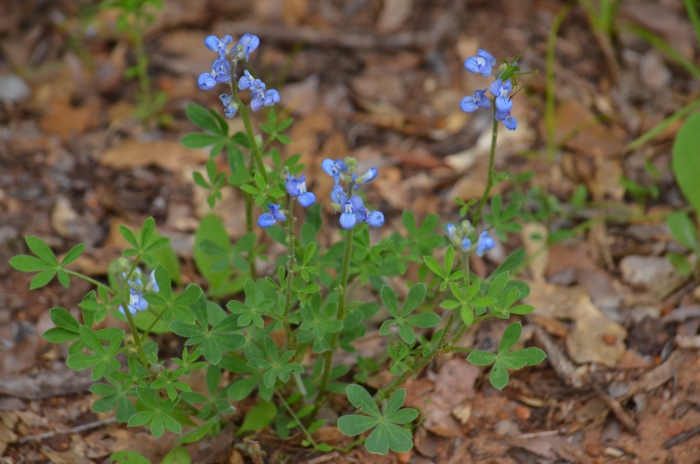Texas Bluebonnet
(Lupinus subcarnosus)
Texas Bluebonnet (Lupinus subcarnosus)
/
/

Cody Stricker
CC BY 4.0
Image By:
Cody Stricker
Recorded By:
Copyright:
CC BY 4.0
Copyright Notice:
Photo by: Cody Stricker | License Type: CC BY 4.0 | License URL: http://creativecommons.org/licenses/by/4.0/ | Rights Holder: Cody Stricker | Publisher: iNaturalist | Date Created: 2019-04-30T14:57:35-07:00 |







































Estimated Native Range
Summary
Lupinus subcarnosus, commonly known as Texas Bluebonnet, is an annual herb native to the sandy, loamy soils of prairies and open fields in Texas. It typically grows to a height of 2-3 feet (0.6-0.9 meters) and a width of 0.5-0.7 feet (0.15-0.2 meters). The plant has a compact, bushy form and is renowned for its vibrant blue to purple flowers with white tips that form on spikes in the early to mid-spring, creating a spectacular display of color.
Texas Bluebonnets are a symbol of the state and are celebrated for their showy flowers, which make them a popular choice for wildflower meadows, roadside plantings, and native gardens. They are also used in pollinator gardens due to their ability to attract bees and butterflies. These plants are well-adapted to dry conditions and require minimal maintenance once established. They thrive in full sun and prefer well-drained soils, although they can tolerate some variation in soil types. While generally pest-free, they can be susceptible to fungal diseases if grown in poorly drained soils or overly humid conditions. It’s important to note that the seeds of Texas Bluebonnets have a hard coat, which can make germination challenging; scarification or soaking the seeds can improve germination rates.CC BY-SA 4.0
Texas Bluebonnets are a symbol of the state and are celebrated for their showy flowers, which make them a popular choice for wildflower meadows, roadside plantings, and native gardens. They are also used in pollinator gardens due to their ability to attract bees and butterflies. These plants are well-adapted to dry conditions and require minimal maintenance once established. They thrive in full sun and prefer well-drained soils, although they can tolerate some variation in soil types. While generally pest-free, they can be susceptible to fungal diseases if grown in poorly drained soils or overly humid conditions. It’s important to note that the seeds of Texas Bluebonnets have a hard coat, which can make germination challenging; scarification or soaking the seeds can improve germination rates.CC BY-SA 4.0
Plant Description
- Plant Type: Herb
- Height: 2-3 feet
- Width: 0.5-0.7 feet
- Growth Rate: Moderate
- Flower Color: Blue, Purple, White
- Flowering Season: Spring
- Leaf Retention:
Growth Requirements
- Sun: Full Sun
- Water: Low
- Drainage: Fast
Common Uses
Bee Garden, Bird Garden, Butterfly Garden, Deer Resistant, Drought Tolerant, Groundcover, Hummingbird Garden, Low Maintenance, Rabbit Resistant, Showy Flowers
Natural Habitat
Native to the prairies and open fields of Texas
Other Names
Common Names:
Scientific Names: , Lupinus subcarnosus, Lupinus bimaculatus, Lupinus perennis var. austrinus,
GBIF Accepted Name: Lupinus subcarnosus Hook.